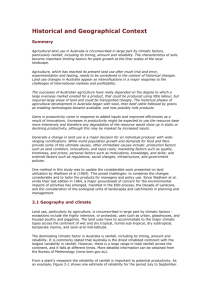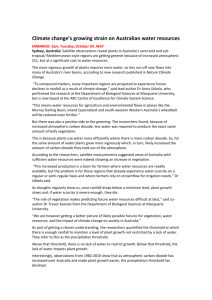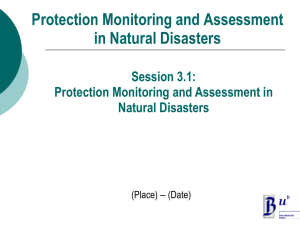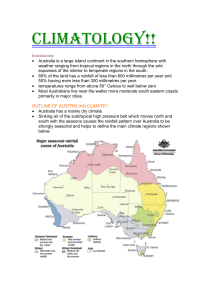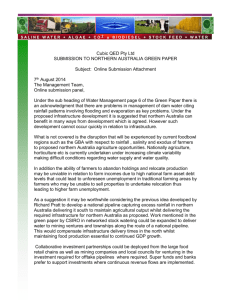National Adaptation Priorities (Word)
advertisement
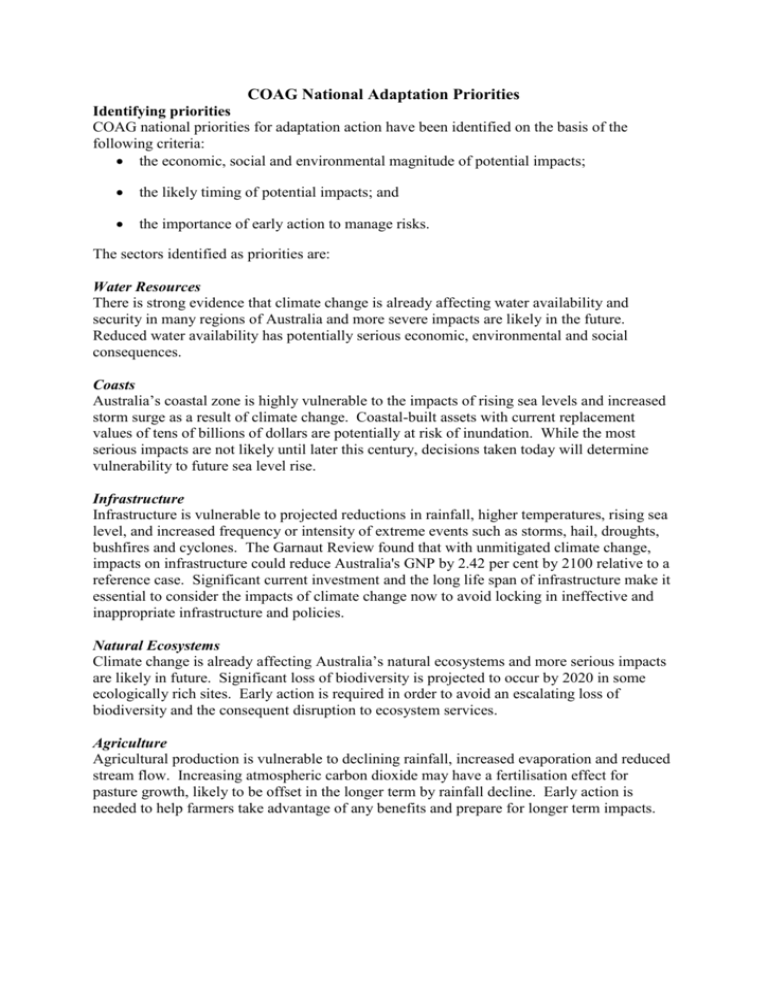
COAG National Adaptation Priorities Identifying priorities COAG national priorities for adaptation action have been identified on the basis of the following criteria: the economic, social and environmental magnitude of potential impacts; the likely timing of potential impacts; and the importance of early action to manage risks. The sectors identified as priorities are: Water Resources There is strong evidence that climate change is already affecting water availability and security in many regions of Australia and more severe impacts are likely in the future. Reduced water availability has potentially serious economic, environmental and social consequences. Coasts Australia’s coastal zone is highly vulnerable to the impacts of rising sea levels and increased storm surge as a result of climate change. Coastal-built assets with current replacement values of tens of billions of dollars are potentially at risk of inundation. While the most serious impacts are not likely until later this century, decisions taken today will determine vulnerability to future sea level rise. Infrastructure Infrastructure is vulnerable to projected reductions in rainfall, higher temperatures, rising sea level, and increased frequency or intensity of extreme events such as storms, hail, droughts, bushfires and cyclones. The Garnaut Review found that with unmitigated climate change, impacts on infrastructure could reduce Australia's GNP by 2.42 per cent by 2100 relative to a reference case. Significant current investment and the long life span of infrastructure make it essential to consider the impacts of climate change now to avoid locking in ineffective and inappropriate infrastructure and policies. Natural Ecosystems Climate change is already affecting Australia’s natural ecosystems and more serious impacts are likely in future. Significant loss of biodiversity is projected to occur by 2020 in some ecologically rich sites. Early action is required in order to avoid an escalating loss of biodiversity and the consequent disruption to ecosystem services. Agriculture Agricultural production is vulnerable to declining rainfall, increased evaporation and reduced stream flow. Increasing atmospheric carbon dioxide may have a fertilisation effect for pasture growth, likely to be offset in the longer term by rainfall decline. Early action is needed to help farmers take advantage of any benefits and prepare for longer term impacts. Emergency Management Climate change is likely to increase the frequency and intensity of climate related natural disasters. This would stretch resources including volunteers, with the occurrence of concurrent extreme events potentially exceeding our current response capacity. Early action is required to ensure we have the capacity to respond to a likely increase in extreme events. Early planning and preparedness such as appropriate building design, evacuation plans and early warning systems are needed to reduce vulnerability. Vulnerable Communities Some communities will be highly vulnerable to climate change impacts, in part because of socio-economic, cultural or other disadvantage. An increase in heat-related deaths is likely to be one of the most significant health impacts of climate change in Australia, with impacts most felt by the elderly and chronically ill. Geographic and social isolation, and language and cultural barriers, could limit the capacity to adapt in some parts of the community, including remote indigenous communities.



